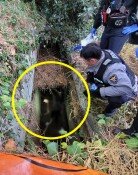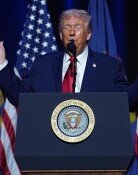[Editorial] Cheonggyecheon Recovery Is a Lesson for All of Us
[Editorial] Cheonggyecheon Recovery Is a Lesson for All of Us
Posted October. 01, 2005 07:43,
The Cheonggyecheon stream will be running again today. The clean stream will come back to us, uncovered from the darkness. The two-year long restoration project will bring back the stream that has been trapped under concrete for 47 years.
What was restored was not only the stream. The project restored lives. The project deserves to be praised as a landmark model for city development, having human beings at heart. This is not a one-way development. It carries significance in the sense that the project has made success, by winning overwhelming support and participation from the public.
The restoration of the stream is meaningful in itself. But even more so, it offers important lessons. The success of the project sends the signal that pragmatism, actions and passion for the future prevail over ideology, words and obsessions with the past.
The project is a shining example of the fact that reform can make people happy only when it is productive and when its first priority is the welfare of the people. The Seoul metropolitan government explained that it cost 390 billion won to breathe new life to the river. And it didnt forget to add that the economic benefits the project will bring to the city are estimated to reach 23 trillion won. This fact alone proves that the project deserves praise from the public.
Furthermore, what adds significance to the project is that Seoul city has been wise in dealing with disputes over the project. As soon as the restoration plan was announced, 200,000 vendors along the river adamantly opposed the plans, citing that the project would cost their means for livelihood. Seoul city officials met with them as many as 4,200 times to persuade them. They explained why the city needed the project and what economic benefits the project would offer. They didnt give in to the opposition or make a face-saving compromise. And their insistence on this principle worked.
Moreover, the city engaged seasoned seniors and experts from the planning stages to embrace their opinion. As a result, it didnt take long before the project, which once faced strong opposition, became praised by all. The success of the project has taught us how the government should pursue national projects which may entail conflicts of interests.
The Roh Moo-hyun administration has been engrossed in unproductive business for two years, has created divisions and has been obsessed with the past. It should learn from the Cheonggyecheon restoration project how to better run the nation. If the administration placed pragmatism as its first priority, the presidents supporting rate as well as the nations economy would not have deteriorated so badly. This is the lesson that the Cheonggyecheon has taught us.







